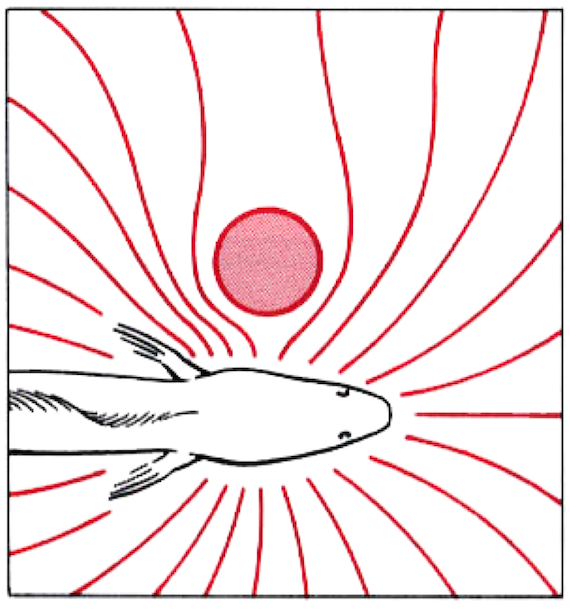Innovative Technologies Inspired by the Wonders of Nature
Written on
Chapter 1: The Concept of Biomimicry
A few months ago, I enrolled in a university course titled “Biomimicry.” You might be asking yourself, what does that entail? I had the same question initially.
Biomimicry refers to the design and creation of materials, structures, and systems based on biological entities and processes. The examples shared by my lecturer significantly impacted how I perceive and engage with nature. Here are some insights to share…
Section 1.1: Smart Devices and Sound Localization
Imagine asking, “Alexa, what will the weather be like tomorrow?” Smart home devices are capable of responding to our queries, playing music, or searching the internet without us needing to lift a finger. But how do these devices accurately detect our voices?
The answer lies in a fundamental biological principle governing mammalian hearing. When sound travels from a source, it reaches our ears at slightly different times due to the distance between them. Neurons connected to each ear act as coincidence detectors, firing when sound is detected in one ear and waiting until it reaches the other. The overlap in neuron firing indicates the sound's direction and distance.
Engineering researchers have successfully mimicked this biological principle, achieving nanometre-scale precision. This process of cross-correlating sound reaching two receptors at varying times has led to advancements in hearing aids, directional microphones, and sound localization technologies in devices like Alexa!
Section 1.2: Innovations in Medical Imaging
Have you ever pondered how doctors examine the interiors of clogged arteries? It’s fascinating how medical professionals assess whether arterial walls are healthy or plagued by cholesterol buildup. This innovation actually traces its roots to fish.
Certain fish function as ‘swimming dipoles,’ generating an electric field around their bodies. Their heads are positively charged while their tails are negatively charged, causing electrons to move toward the positively charged head. When an object approaches, it alters this electric field—nearby objects create high amplitude disturbances, while distant ones produce lower amplitude changes.
This principle is applied in medical technology. When a catheter is inserted into a blood vessel and generates an electric field, variations in the walls can be detected, allowing for the identification of imperfections as the catheter navigates through. This breakthrough has been crucial in preventing blood flow obstructions.

Chapter 2: Nature's Palette in Cosmetics
Have you ever worn makeup? Picture a vibrant eyeshadow palette filled with rich colors. Would you believe that some of these shades contain no pigment whatsoever?
Similar to the wings of butterflies, which are devoid of pigment molecules, makeup can achieve brilliant hues through structural coloration. Butterfly wings are formed by layers of chitin plates that absorb various wavelengths of light based on their arrangement. For instance, thicker plates yield red, while thinner ones produce blue.
Cosmetics utilizing structural colors incorporate layers of fibrous materials like mica and silica, mimicking the natural configurations found in butterfly wings to create unique and enduring colors.

Section 2.1: Artificial Intelligence Inspired by Human Vision
It’s impossible to discuss innovations without mentioning artificial intelligence (AI). AI is revolutionizing the 21st century in ways we are still beginning to comprehend. But where did this journey start?
The origin lies in the human visual system, which is organized in hierarchical layers. The initial layers enable us to distinguish colors, followed by separating backgrounds from foregrounds, and ultimately identifying objects like dogs or cats. This process can be simplified into stages: pixels > edges > curves > shapes > identifiable objects.
Deep Neural Networks (DNNs) are artificial networks that replicate this hierarchical structure found in nature. These models are designed to mimic the organization of the early stages of human visual processing, such as the HMAX model, which facilitates rapid object recognition by emulating the neural pathways active in our visual system.

Chapter 3: Soft Robotics and Nature's Flexibility
In the realm of orthopaedics and limb reconstruction, research has taken a surprising turn by examining the bone structures of larvae. These creatures lack rigid components, making them an intriguing model for bioengineers.
To enhance the experience for amputees using exoskeleton limbs, researchers look to organisms like larvae, which are bone-free and have adaptable structures. This exploration has led to the emergence of Soft Robotics.
A promising avenue within this field draws inspiration from the rolling motion of caterpillars. Despite having no bones, they generate momentum through antagonistic ground forces, quickly altering their body shape to propel themselves. Soft robots inspired by this motion could be beneficial in emergency scenarios, enabling them to navigate through buildings and assist in firefighting efforts.

Conclusion
Thank you for reading! For more articles like this, you can find me on Medium. If you have any questions, suggestions, or ideas on how to improve, feel free to leave a comment or connect with me on LinkedIn.
The first video titled 5 Inventions Inspired By Animals showcases various technologies that have taken cues from the animal kingdom, illustrating the profound impact of nature on innovation.
The second video titled 11 Awesome Technologies Inspired by Animals dives deeper into the remarkable innovations that have been influenced by the characteristics and behaviors of animals.